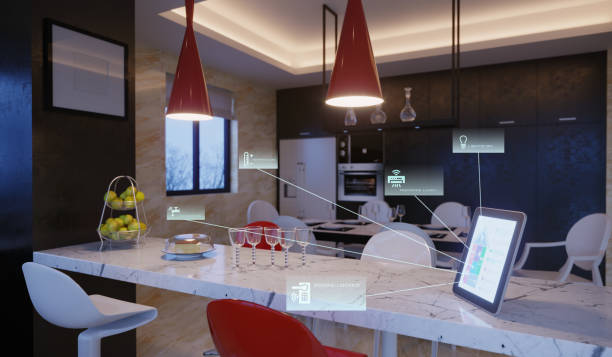Whether you’re away from home for work and stressing that you forgot to lock the front door or want to check on your kids after school, smart technology provides peace of mind.
Smart devices are connected to one another through centralized hubs that communicate over the internet. They’re often set to run on schedules or respond to voice commands.
Remote Access
Controlling and monitoring smart home devices remotely through mobile apps offers convenience, comfort, energy efficiency and security. This is especially beneficial for those who have busy schedules or live with elderly residents, as they can check in on loved ones or pets while away from home.
Many smart home devices can be controlled via voice assistants, such as Amazon Alexa or Google Assistant, and can also be set on schedules to turn on and off throughout the day. This is useful for lights, appliances and even water heaters.
Increasingly, smart home technology is being designed to be more user-friendly for those with disabilities or limited mobility. Sensors and voice control can help close communication gaps by allowing people to interact with technology verbally rather than physically. Many of these same devices can also be integrated into home healthcare systems, providing additional benefits for patients with chronic conditions or disabilities. These features allow them to communicate with their health care providers and share data about blood pressure, temperature and more from the comfort of their own homes.
Energy Savings
One of the biggest benefits smart home technology offers is its potential to save energy. When devices like appliances, security systems, and lighting are interconnected, homeowners can monitor their usage from a central location and make adjustments to save money on utility bills.
A smart home system may also include self-learning capabilities to improve efficiency. For example, a smart thermostat can learn a homeowner’s behavior and automatically lower the temperature at a certain time of day so that their home is cool when they return from work.
Finally, smart devices can automate leisure and entertainment activities. This feature makes it easy to play music, audiobooks and TV shows from any room, control lights or the blinds remotely, check in on elderly family members at home, and more. However, this type of technology requires a reliable Internet connection and can be frustrating when it doesn’t work as expected (think weekends spent troubleshooting why your smart speaker or appliance won’t respond to a command).
Convenience
A smart home system is much more convenient than manually controlling each device individually. With centralized control, homeowners can turn on the lights with their voice or from a remote location and get in-depth reports on energy usage as well as triggering devices to change their behavior when certain events occur.
For instance, some smart thermostats can detect when nobody is home and go into what’s known as away mode by turning off all the lights in your house. This will make the house appear unoccupied to deter burglars and save on your energy bill.
Likewise, smart video doorbells and smart locks can notify you if there’s someone at your doorstep. You can also use smart speakers to listen to music or ask for traffic and weather updates and set reminders from anywhere. Many smart home products can also be integrated to assist those with special needs or disabilities. For example, visually impaired residents can interact with a smart home system using voice commands and virtual assistants that reply verbally, closing any communication gaps they might experience in a non-smart environment.
Security
Having smart appliances and devices that can communicate on a single network is great for homeowners who want to have centralized control of their systems. They can manage their lights, thermostats and security cameras all from one app, whether they’re at home or not.
Homeowners can also receive notifications whenever someone uses their system. They can be notified when someone opens the front door using a video doorbell, disarms their security system or unlocks the basement door. This allows homeowners to keep an eye on their children, pets or elderly parents.
Many smart appliances and devices can be controlled by voice assistants like Alexa or Google Assistant. This feature is great for people who have difficulty physically interacting with devices or for those who aren’t comfortable with technology. Some devices can even be set to what’s called “away” mode, which will turn on and off lights throughout the day to make it appear as if someone is home, deterring burglars.


